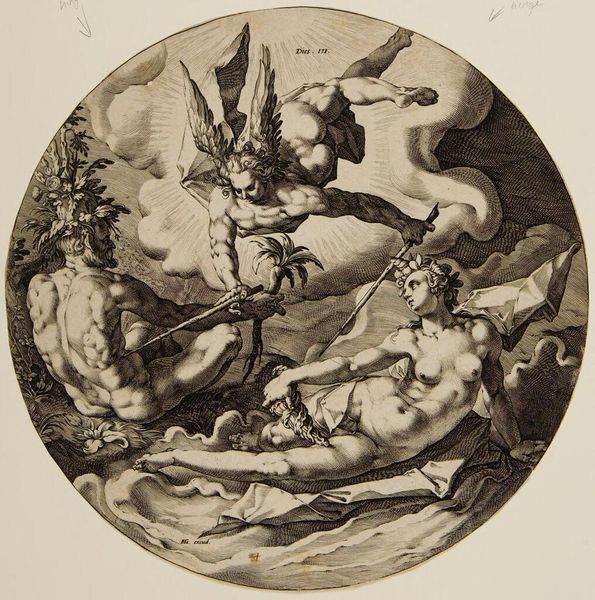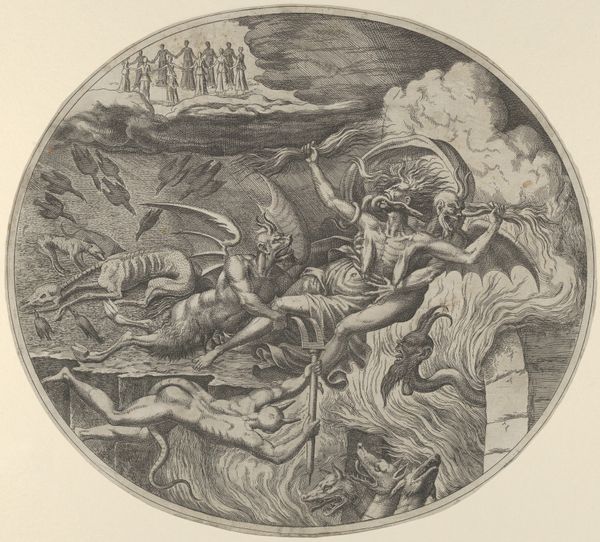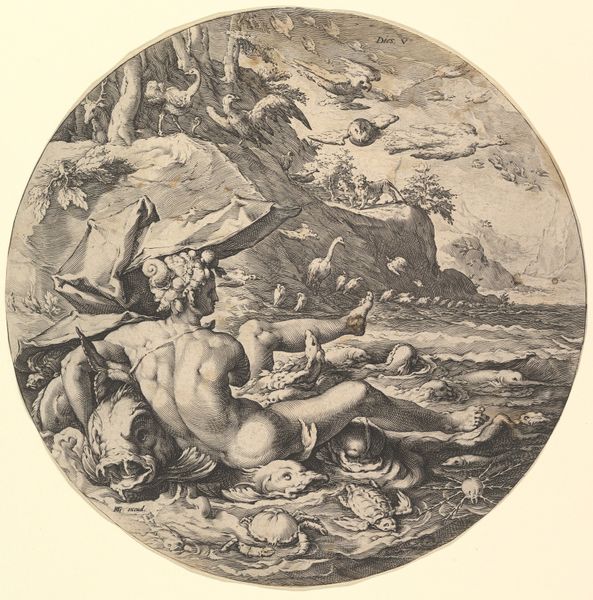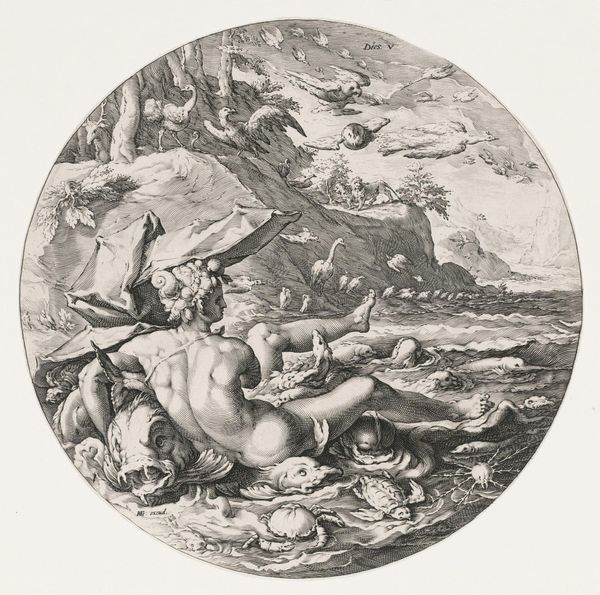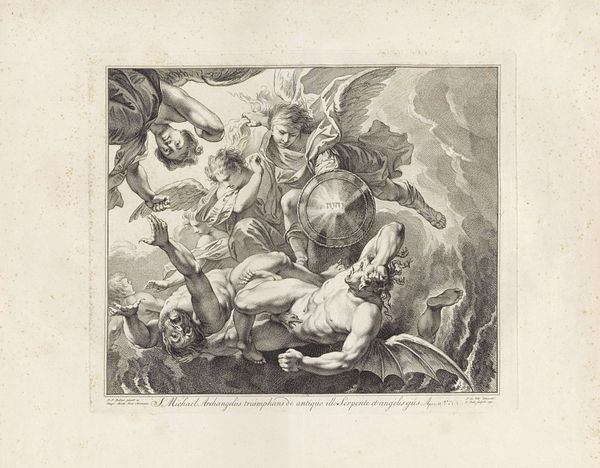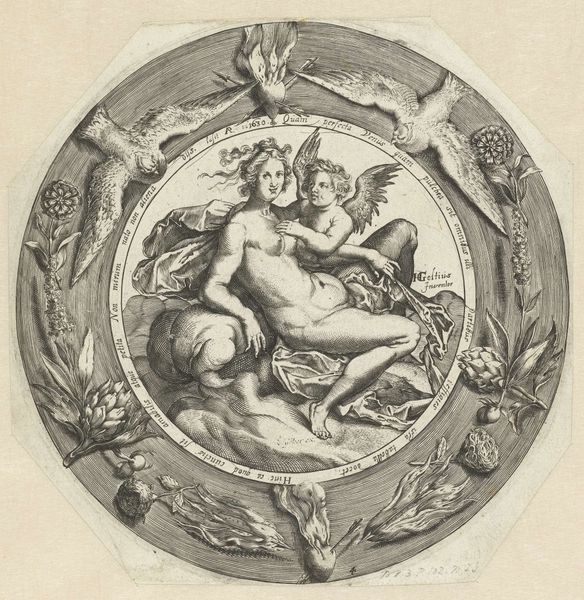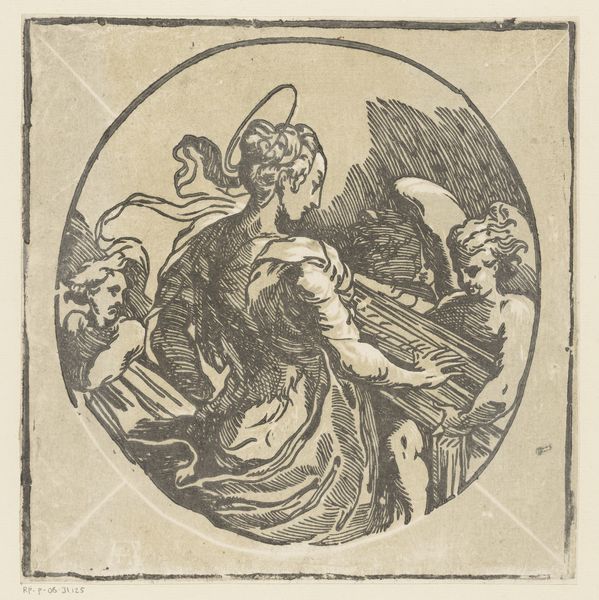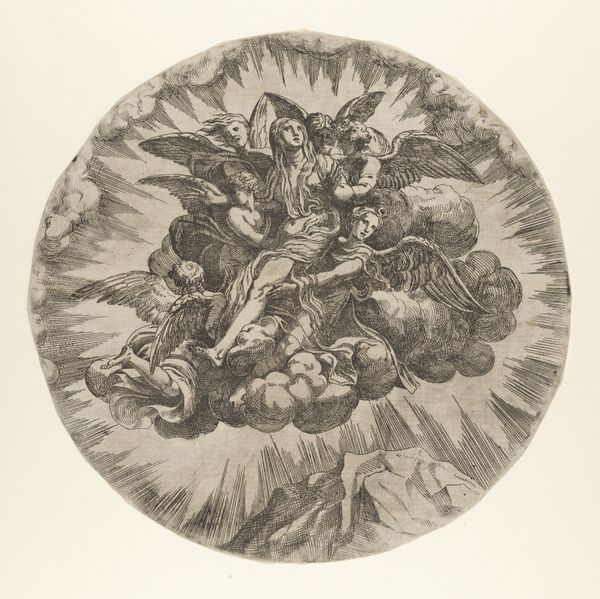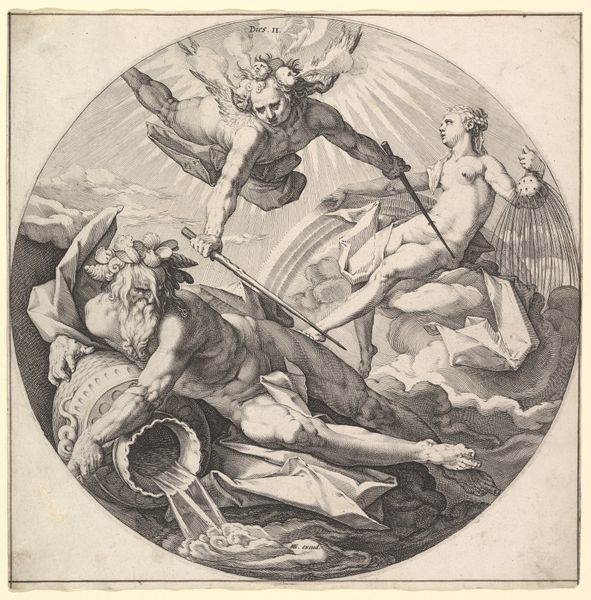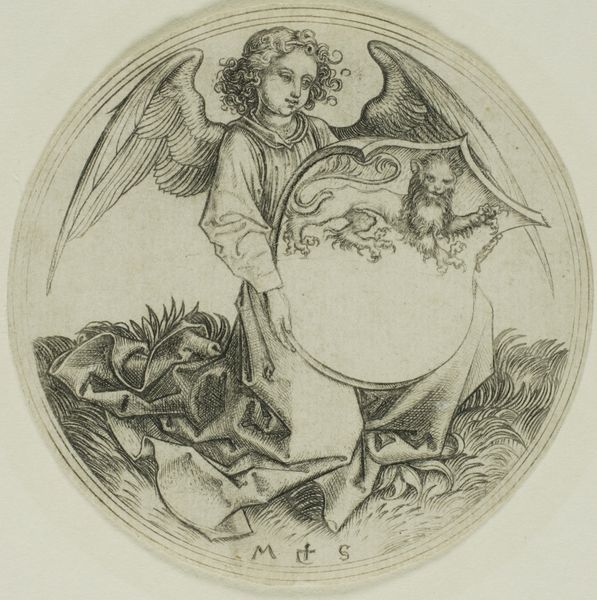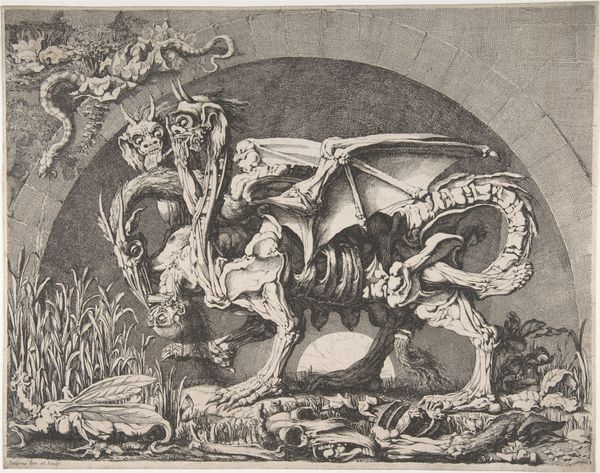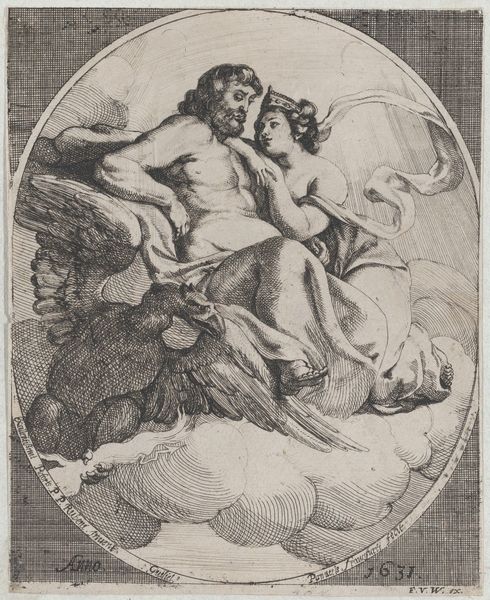
The Third Day ( Dies III): The Separation of Land and Sea, from The Creation of the World, a series of seven plates 1589
0:00
0:00
print, engraving
# print
#
history-painting
#
northern-renaissance
#
nude
#
engraving
Dimensions: Sheet (diameter): 10 7/16 in. (26.5 cm)
Copyright: Public Domain
Curator: Jan Muller’s “The Third Day (Dies III): The Separation of Land and Sea, from The Creation of the World, a series of seven plates,” created in 1589, employs engraving to bring this dramatic scene to life. What strikes you about it initially? Editor: The composition, immediately! It's almost dizzying – the way the figures are arranged in that circular frame, suspended amongst the clouds and swirling water. It has a real sense of dynamism but also, I have to say, a kind of forceful patriarchal assertion over the natural world. Curator: Absolutely. As an engraving, the creation of this piece relies heavily on Muller’s technical skill with the burin. Considering the number of steps, tools, and careful applications, it’s a true demonstration of labor and skill. The series itself explores a Genesis story through printmaking, a fairly popular method for wider dissemination of religious narratives at the time. Editor: It’s fascinating how he visualizes the abstract act of creation. We have these muscular, nude figures representing land and sea, seemingly controlled or divided by a winged figure bearing some kind of staff. Given its historical context, I'm really drawn to how gender and power are being visually constructed here. Curator: I agree. And the material qualities further that perception. Consider how the engraved lines create depth and texture, shaping not only the bodies, but also the heavens and the waters below, emphasizing a structured understanding of space and creation. Editor: Right. This image also speaks volumes about the cultural assumptions of the Northern Renaissance. That emphasis on the idealized male form is no accident; it’s embedding a hierarchy, and the almost passive pose of the female figure adds another layer. Curator: Indeed, the print serves as a testament to the fusion of skilled craftsmanship and dissemination of religious and social beliefs. Its impact lies not only in the artistry, but in the network of skilled workers, including the artist, printers and distributors involved in production and dissemination, allowing wider access to art for didactic or decorative purposes. Editor: Looking at the image today prompts an urgent interrogation of its underlying assumptions. How are these representations shaping, reflecting, or challenging the contemporary discourse? I find it valuable in how it forces me to confront historical perspectives. Curator: A very compelling analysis. It highlights how this artwork continues to offer perspectives on our understanding of both artistic and social construction.
Comments
No comments
Be the first to comment and join the conversation on the ultimate creative platform.
